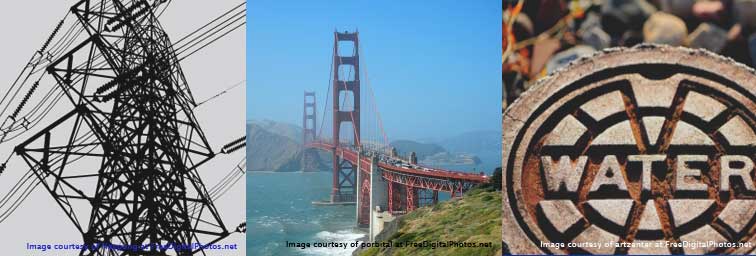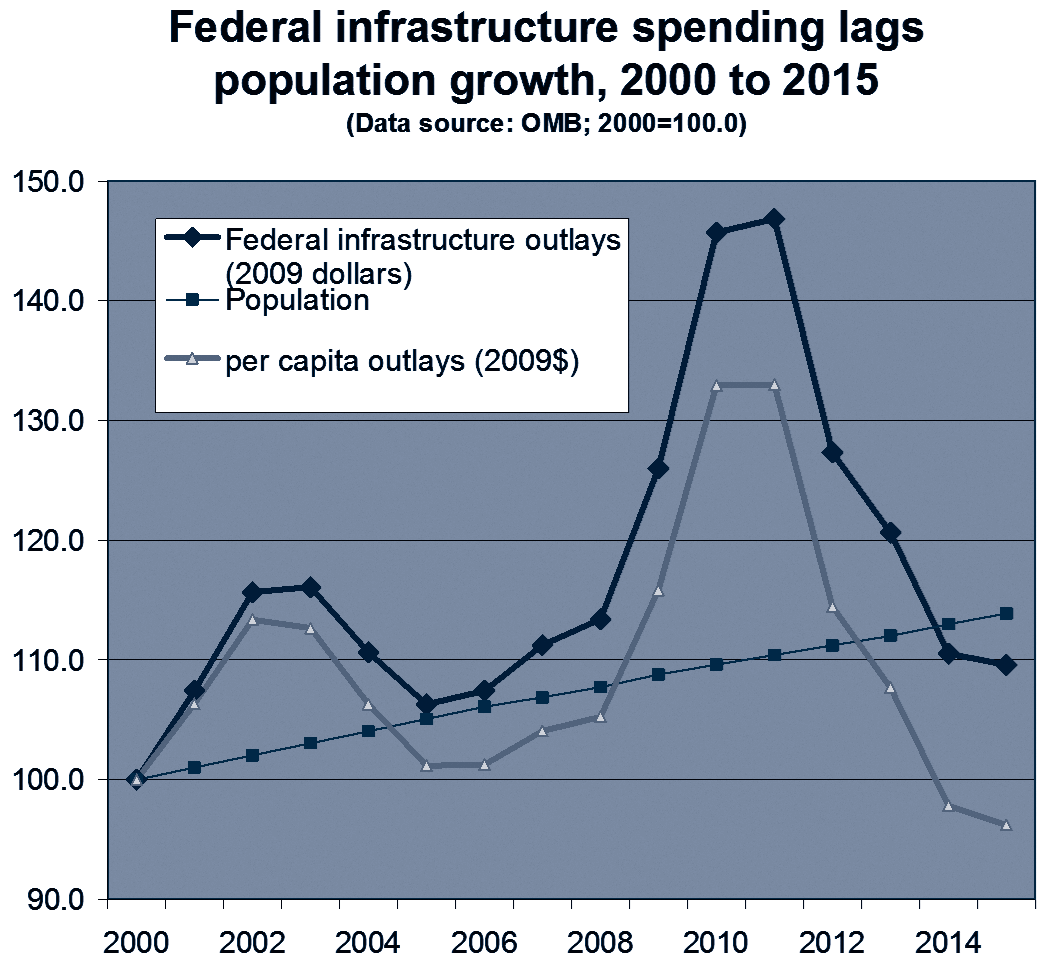
Collision Course: Infrastructure and U.S. Population Growth
- Edwin S. Rubenstein
- July 5, 2017
- Forum Papers
- Forum Paper
- 0 Comments
![]() Your gift helps publish and distribute materials like this.
Your gift helps publish and distribute materials like this.
Click here for a downloadable, printable PDF version
COLLISION COURSE: INFRASTRUCTURE AND U.S. POPULATION GROWTH
An NPG Forum Paper
American infrastructure faces two enormous challenges. Much of it was built shortly after World War II, so it is outdated and has been allowed to deteriorate. Equally important: the U.S. population continues to grow, requiring additional capacity and wearing out existing infrastructure at higher rates.
If current trends continue, our population will rise from 319 million in 2014 to 417 million in 2060. Nearly two-thirds (65%) of this increase will be due to new immigrants. This does not include the U.S.-born children of immigrant mothers, which are projected to total 40 million over the next 45 years. Owing to their above average fertility rates, immigrant mothers will account for 20.3% of all births over this period, higher than their share of the women in childbearing ages. Meanwhile, fertility rates of native-born mothers are falling.
Infrastructure and population growth? That’s an odd couple. Immigration policy has been debated for years, but the debate usually focuses on border security, criminal deportations, and whether illegal alien workers are really needed to do the jobs that Americans “won’t do.” Immigration’s impact on public infrastructure is rarely discussed.
Until the past few months infrastructure policy was on the back burner, surfacing when a bridge or levee collapsed, but generally of interest only to civil engineers and policy wonks. That changed briefly during the Great Recession, when Barack Obama’s stimulus bill boosted federal infrastructure outlays by $55 billion, in nominal terms, over the 2009-2014 period. About half of that amount was spent in 2009 and 2010.
Since then the economy has recovered, but infrastructure spending has collapsed. The one constant over this period has been U.S. population growth:
Comparing 2015 with the year 2000 we find:
• Infrastructure spending, adjusted for
inflation, is 9.6% higher.
• U.S. population is 13.9% higher.
• Per capita infrastructure spending is 3.8%
lower.
Continue reading the full Forum paper by clicking here.
Ed Rubenstein, president of ESR Research, is an experienced business researcher, financial analyst, and economics journalist. He has written extensively on federal tax policy, government waste, the Reagan legacy, and – most recently – on immigration. He is the author of two books: The Right Data (1994) and From the Empire State to the Vampire State: New York in a Downward Transition (with Herbert London). His essays on public policy have appeared in The Wall Street Journal, The New York Times, Harvard Business Review, Investor’s Business Daily, Newsday, and National Review. His TV appearances include Firing Line, Bill Moyers, McNeil-Lehr, CNBC, and Debates-Debates. Mr. Rubenstein has a B.A. from Johns Hopkins and a graduate degree in economics from Columbia University.

